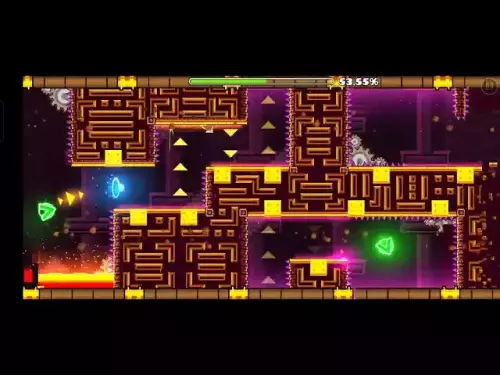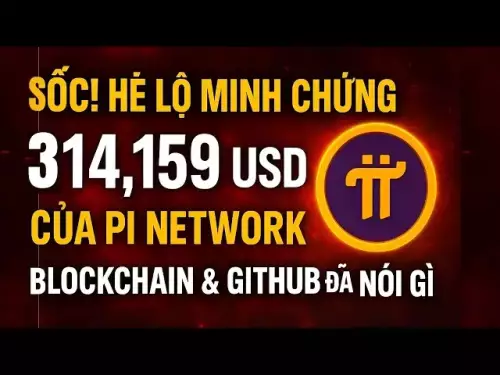 |
|
 |
|
 |
|
 |
|
 |
|
 |
|
 |
|
 |
|
 |
|
 |
|
 |
|
 |
|
 |
|
 |
|
 |
|
Cryptocurrency News Articles
Plasma, Blockchain, and Stablecoins: A New Era for Digital Dollars?
Sep 26, 2025 at 03:02 am
Explore the latest trends in Plasma Blockchain, stablecoins, and their impact on the future of digital finance. Is Plasma the next big thing?

The world of digital finance is constantly evolving, and Plasma Blockchain is making waves! Positioned as a Layer 1 blockchain for the stablecoin economy, it's aiming to redefine how digital dollars move. Let's dive into the key developments around Plasma, blockchain technology, and stablecoins.
Plasma Blockchain Takes Flight
On September 25, 2025, Plasma Blockchain officially launched its Mainnet Beta, introducing its native XPL token. This launch injected over $2 billion in stablecoin Total Value Locked (TVL) into its ecosystem, alongside integrations with over 100 DeFi protocols, immediately placing Plasma among the top 10 blockchains by stablecoin supply. Plasma's innovation lies in its PlasmaBFT consensus layer, enabling zero-fee USDT transfers and full Ethereum Virtual Machine (EVM) compatibility.
Zero-Fee USDT Transfers: A Game Changer?
One of Plasma's standout features is its ability to facilitate zero-fee USDT transfers. This could significantly reduce friction and costs in stablecoin-based payments and remittances, potentially disrupting existing paradigms for global payments. This is especially attractive following regulatory milestones like the U.S. "Genius Act" in July 2025, which recognized stablecoins as legal payment instruments.
Who Stands to Win (and Lose)?
The launch of Plasma Blockchain is poised to reshape the competitive landscape. Stablecoin issuers like Tether, DeFi protocols like Aave and Ethena, and crypto exchanges like Binance are among the potential winners. Conversely, other Layer 1 blockchains like Ethereum and Tron could face increased competition.
The Rise of Stablecoins and Blockchain Specialization
Plasma's emergence reflects the accelerating trend of stablecoin dominance and mainstream adoption. Stablecoins are evolving beyond mere trading collateral, becoming critical infrastructure for global remittances, payroll, and fintech. This also signals an evolution in blockchain scaling solutions, moving beyond general-purpose Layer 2s to specialized Layer 1s designed for specific use cases.
Challenges and Opportunities Ahead
Plasma faces challenges, including competition from established players and potential volatility from future XPL token unlocks. However, its focus on solidifying network stability, expanding zero-fee USDT transfers, and the rollout of "Plasma One," a stablecoin-native neobank app, present significant opportunities. The market will be watching key indicators like daily transaction volume, active addresses, and the success of Plasma One.
Circle's Bold Moves: Reversibility and Confidentiality
Circle, a major player in the stablecoin space, is exploring the possibility of reversible transactions in cases of fraud or disputes. This is a significant departure from the traditional crypto ethos of immutability. Circle is also working on a confidentiality layer to encrypt transaction amounts, aiming to attract financial institutions. These moves highlight the tension between the desire for fast, final transactions and the need for security and compliance.
A Glimpse into the Future
Plasma Blockchain's Mainnet Beta launch marks a pivotal moment, signaling a specialized approach to the stablecoin market. With zero-fee USDT transfers, a robust EVM-compatible environment, and the upcoming Plasma One neobank, it's a contender to become a backbone of digital dollar transactions globally.
So, will Plasma revolutionize the world of stablecoins? Only time will tell. But one thing's for sure: the ride's gonna be wild! Keep your eyes peeled, folks, because the future of digital finance is unfolding right before our very eyes. Who knows, maybe one day we'll all be paying for our morning coffee with zero-fee stablecoins. Now that's what I call progress!
Disclaimer:info@kdj.com
The information provided is not trading advice. kdj.com does not assume any responsibility for any investments made based on the information provided in this article. Cryptocurrencies are highly volatile and it is highly recommended that you invest with caution after thorough research!
If you believe that the content used on this website infringes your copyright, please contact us immediately (info@kdj.com) and we will delete it promptly.





























































